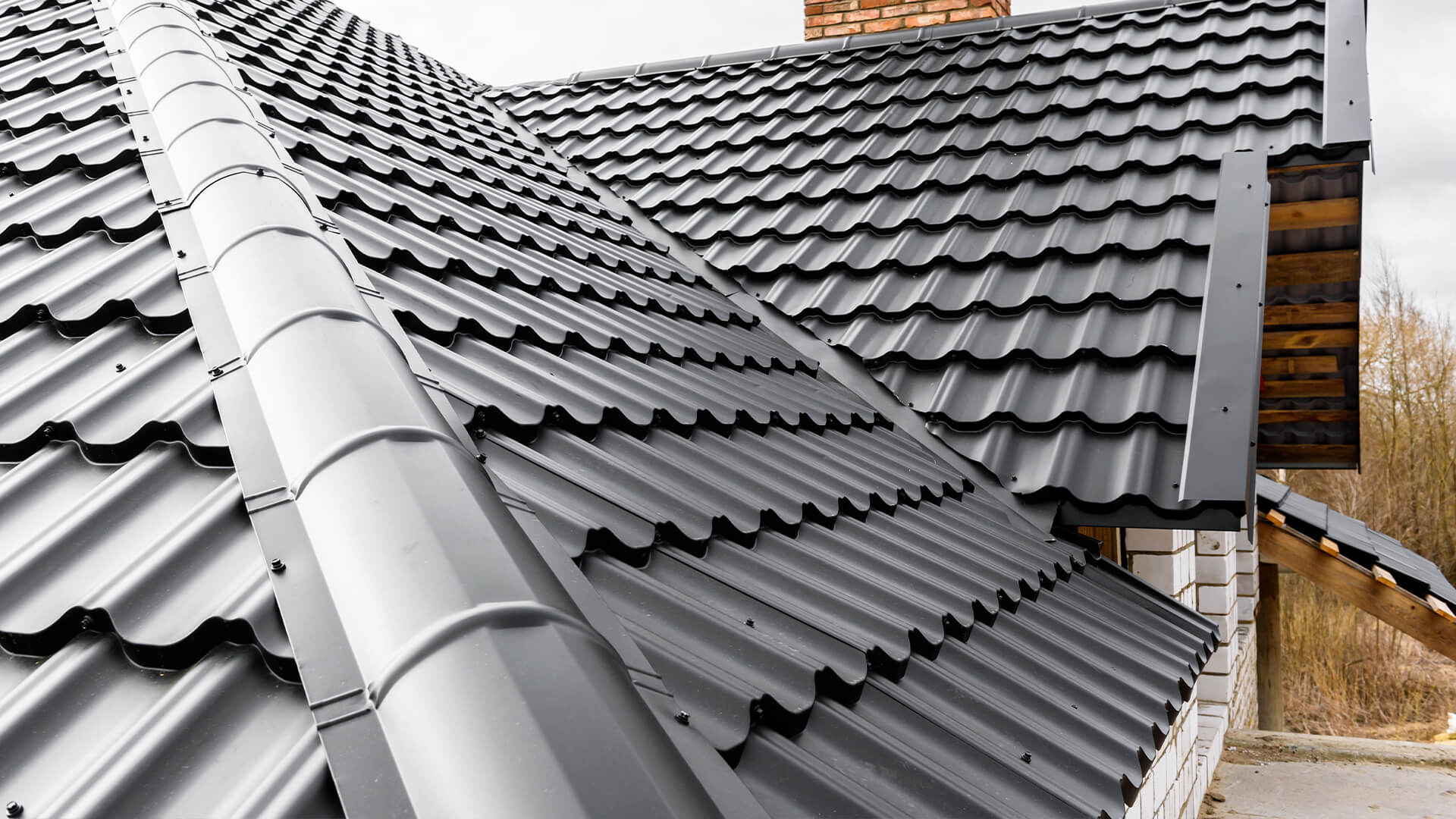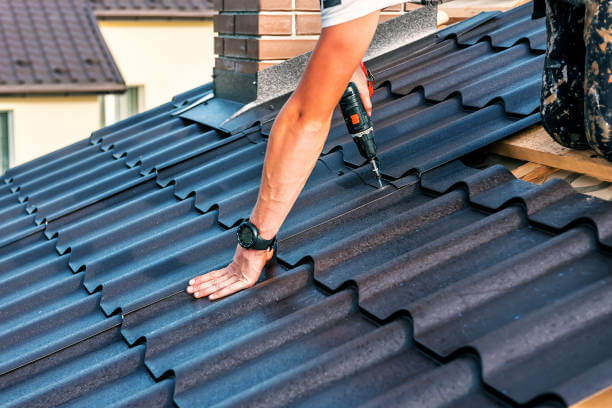Usual Issues That Can Impact Your Roofing and Just How to Address Them
Roofing problems can develop from numerous elements, affecting the honesty of a home. roofing contractor in pleasant hill. Typical troubles consist of leakages, missing out on shingles, and bad air flow. Home owners frequently ignore these problems until they escalate, resulting in even more substantial damages. Recognizing the solutions and causes is vital for preserving a roof covering's long life. What actions can be required to stop these concerns from coming to be pricey repairs?
Roof Leakages and Their Causes
Roofing leakages can develop from various sources, recognizing their key causes is important for effective prevention and repair work. One common factor is the build-up of debris in valleys and seamless gutters, which can block water flow and lead to pooling. Additionally, inappropriate blinking around vents, chimneys, and skylights can develop powerlessness, allowing water to infiltrate. Aging roof covering materials also play a substantial function; as roofs age, they might become weak and lose their effectiveness at repelling dampness. Ice dams can form throughout winter months, creating water to back up under tiles and leakage into the home. Finally, poor air flow can lead to moisture accumulation in the attic, which might compromise the roof structure with time. Recognizing these causes can assist home owners take proactive procedures to maintain their roof coverings and stop pricey repair work.
Missing Out On or Harmed Shingles
Numerous property owners deal with problems with missing or damaged shingles, which can substantially jeopardize the honesty of a roofing system. Roofing shingles can come to be dislodged or deteriorate because of extreme weather, age, or bad installation. This damage usually leads to leaks, enhanced energy expenses, and possible architectural problems if not dealt with promptly.To treatment this problem, home owners need to perform normal examinations of their roofings, specifically after extreme tornados. Determining missing or damaged shingles early can prevent further complications. If shingles are discovered to be missing, replacing them quickly is important. For minor damage, such as cracks or curling, using roof cement can give a temporary fix.In cases of prevalent roof shingles damage, a complete roof substitute may be required. Consulting with a professional roof covering service provider is a good idea to examine the extent of the damages and suggest the very best strategy to guarantee the roof's long life and performance.
Poor Roofing System Air Flow
Poor roofing system air flow can result in a selection of issues, consisting of excessive warm build-up and moisture buildup. Homeowners might see indications such as deformed shingles, peeling paint, or mold and mildew growth as signs of poor airflow. roofing pleasant hill mo. Attending to these troubles through efficient air flow remedies can greatly improve the roofing's life-span and overall home comfort
Indications of Poor Air Flow
Just how can one recognize the signs of inadequate roof covering air flow? Homeowners may observe a number of indications that indicate poor ventilation in their roof. One common sign is the existence of too much warmth in the attic room, commonly bring about raised power prices as a/c systems function harder to cool the home. Furthermore, moisture accumulation may manifest as mold and mildew or mildew, which can jeopardize both the roof covering and interior air top quality. Buckling or staining of roof covering materials can also signal poor air flow. Additionally, ice dam development throughout wintertime months might suggest trapped warm due to not enough air flow. Recognizing these signs early can aid house owners address ventilation problems before they intensify into even more considerable roof problems.
Solutions for Improved Air Flow
To enhance roof covering ventilation, property owners can implement numerous efficient solutions that advertise better air movement and decrease warmth accumulation. One of one of the most effective approaches is to set up ridge vents, which permit warm air to run away from the height of the roofing system. In addition, soffit vents can be set up along the eaves to attract cooler air into the attic room space. Including wind turbine vents or powered attic room ventilators can further boost flow, specifically in hot environments. Homeowners ought to additionally make specific that insulation is appropriately installed, as it can obstruct air movement if not located appropriately. Routine examinations and maintenance, consisting of clearing debris from vents, are necessary to preserving efficient ventilation and lengthening roof life.
Storm Damage and Its Effect
Tornados can create numerous types of damage to roof coverings, significantly affecting their honesty and durability. Recognizing indicators of roof problems without delay is vital for efficient fixing and upkeep. Recognizing these aspects can help property owners protect their properties against storm-related damage.
Types of Storm Damage
Severe weather occasions can trigger numerous sorts of damage to roofings, considerably affecting the honesty of a home. High winds can raise floor tiles or tiles, causing subjected areas that may allow water infiltration. Hail storm can develop damages, fractures, or leaks in roofing materials, compromising their protective capabilities. Hefty rainfall can worsen existing vulnerabilities, resulting in leaks and water damages. Furthermore, snow build-up can create architectural anxiety, potentially leading to collapses otherwise correctly managed. Particles from storms, such as dropped branches or rooted out trees, can trigger considerable physical damage too. Comprehending these kinds of storm-related damage is necessary for property owners to take timely activity and assure the durability of their roof.
Indicators of Roofing Issues
Lots of property owners might not right away notice the indicators of roofing issues, numerous indicators can recommend tornado damage and its influence. Visible tiles that are cracked, missing out on, or curled usually indicate that the roof covering has been jeopardized. Homeowners must additionally be alert for granules in seamless gutters or around the home, as this can signal tile wear and tear. Furthermore, staining or water stains on wall surfaces and ceilings may suggest leaks stemming from storm-related damages. Sometimes, the existence of mold and mildew or mildew can indicate extended dampness direct exposure, further highlighting the necessity of resolving roofing system problems. Drooping or irregular rooflines can recommend architectural issues that may have arisen after severe weather events, warranting immediate inspection.

Repair Work and Upkeep Tips
Dealing with roofing concerns quickly can greatly alleviate further damage and expand the lifespan of a roof covering. Storm damages, such as missing leakages or shingles, needs immediate interest to stop water infiltration and architectural compromise. Property owners ought to conduct normal assessments after severe climate occasions to determine potential damage. If visible problems arise, such as drooping or staining, it is a good idea to speak with a specialist roofing contractor for a comprehensive analysis. Short-term solutions, like tarps, can supply temporary relief up until irreversible repairs are made. Regular maintenance, including cleansing gutters and trimming overhanging branches, can likewise lower the threat of future tornado damages. By prioritizing these repair and maintenance suggestions, house owners can boost the resilience and performance of their roof.
Mold and Mildew Growth
When wetness gathers on roofing materials, it produces a setting for mold and mildew and mold development. This organic problem can endanger the structural integrity of the roofing system and result in considerable wellness problems for owners as a result of the launch of spores into the air. Usual reasons of wetness buildup include poor air flow, leaks, and long term direct exposure to humidity.To battle mold and mold, homeowners ought to on a regular basis evaluate their roof coverings for indicators of water damages or discoloration. Executing appropriate ventilation systems helps in reducing moisture degrees, while promptly attending to leakages is crucial. Cleansing the roofing system with suitable mold-removal options can likewise be effective. In severe instances, substitute of influenced roof materials may be essential. Normal maintenance and vigilance can stop mold and mildew from becoming a persistent concern, making sure both the longevity of the roof and the wellness of those living below it.
Accumulation of Particles
Mold and mold are not the only dangers to roof covering materials; the accumulation of debris can likewise pose considerable threats. Leaves, branches, and various other raw material can collect on the roof, causing different concerns. When debris clogs rain gutters and downspouts, it protects against proper water drainage, which can cause water merging and potential leaks. Furthermore, entraped dampness can produce an environment helpful to mold and mildew growth, further deteriorating roofing materials.Regular maintenance is critical to reduce these dangers. House owners should periodically examine their roofing systems, particularly after tornados or high winds, to get rid of any kind of gathered particles. Cleaning rain gutters and making sure that downspouts are clear will assist preserve appropriate drain. In many cases, employing an expert service may be advisable to ensure safe and extensive cleaning. By dealing with debris buildup without delay, the life-span of the roof covering can be prolonged, securing the home from more damage.
Aging Roofing System Materials
Aging roof covering products provide a significant challenge for home owners, as their damage can cause major structural issues. pleasant hill roofer. Over time, direct exposure to extreme climate condition, UV rays, and temperature fluctuations increases wear and tear, diminishing the roof covering's performance. Asphalt tiles might split, curl, or lose granules, while steel roofings can establish rust and corrosion. These concerns not just jeopardize the roofing system's integrity but can additionally cause leaks and water damage inside the home.To address aging roofing system materials, regular assessments are vital. Property owners should seek indications of wear, such as missing shingles or discoloration. Normal maintenance, including cleansing gutters and changing damaged products, can prolong the lifespan of the roof covering. In situations of serious deterioration, a full roofing system substitute may be necessary. Consulting with an expert roofing service provider can offer an exact evaluation and appropriate options tailored to the specific requirements of the home
Regularly Asked Concerns
Just How Can I Tell if My Roof Covering Needs Substitute?
To determine if a roofing requires replacement, one must inspect for considerable wear, missing out on shingles, leaks, or drooping. Consulting a roofing expert can give an accurate evaluation and advice on necessary actions for safety and security and longevity.
What Are the Signs of a Roof Covering Warranty Problem?
Indications of a roofing guarantee issue include visible leakages, substantial wear, or damages not brought on by exterior factors. Homeowners need to record problems and seek advice from the guarantee terms to figure out eligibility for substitutes or repair services.
Just how Often Should I Get My Roofing System Inspected?
Normal roof covering assessments are suggested a minimum of two times a year, ideally in springtime and loss. This positive method helps determine potential troubles early, guaranteeing the roof continues to be in great condition and extending its lifespan.
Can I Execute My Own Roofing Repairs?
The specific considered the possibility of executing their own roof repair services. While some minor tasks may be workable, caution is suggested; incorrect repairs can result in substantial concerns, necessitating expert assistance for safety and performance.
What Is the Average Life Expectancy of Various Roof Products?
